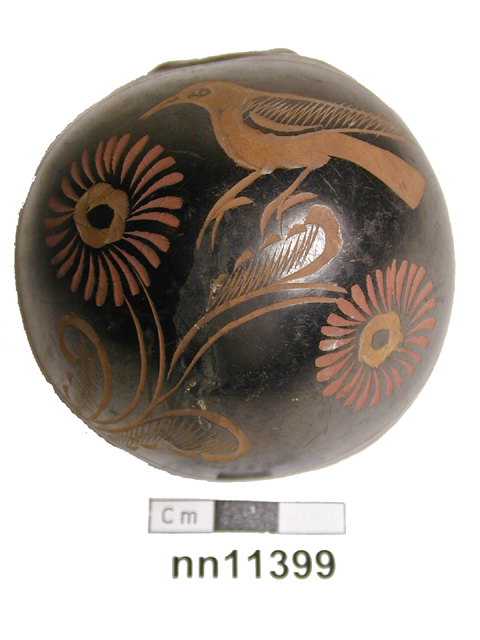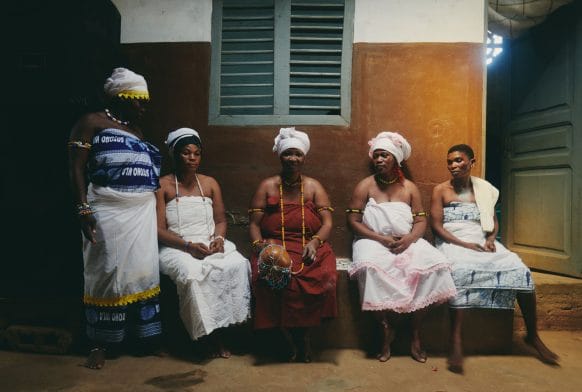
Carved and painted wooden mask which would have been hung in a temple or shrine. Modelled on a Bugaku mask. Lower jaw a separate piece of wood, attached at either side by two cords and with a hole in the lower part, perhaps for housing a pole so that the mask can be carried in procession? Six carved teeth each in upper and lower jaw. Traces of red paint on lips and in inner part of ears, which have long lobes. The rest of the mask has traces of blue paint. Upper part of mask has deep grooves over the two barrel-shaped sections around the eyes. A ridge rises from the nose, continuing to the back of the head, also with ridges. Vertical grooves along the chin are continued in the lower jaw and run underneath the chin. Upturned long blunt nose. Eyes round, with holes at the centre. Hairs protrude from back of head, from beneath each nostril, from the eyebrow area and from the base of the chin, all from holes in the wood. Votive object to hang in temple. Probably about 1830-1850. Composite of two types, one being 'Nasori'. The exaggerated grain is produced by rubbing with sand. Traces of gold paint on eyes and teeth suggesting demonic.


































































































































































































































































































































































































































































































































